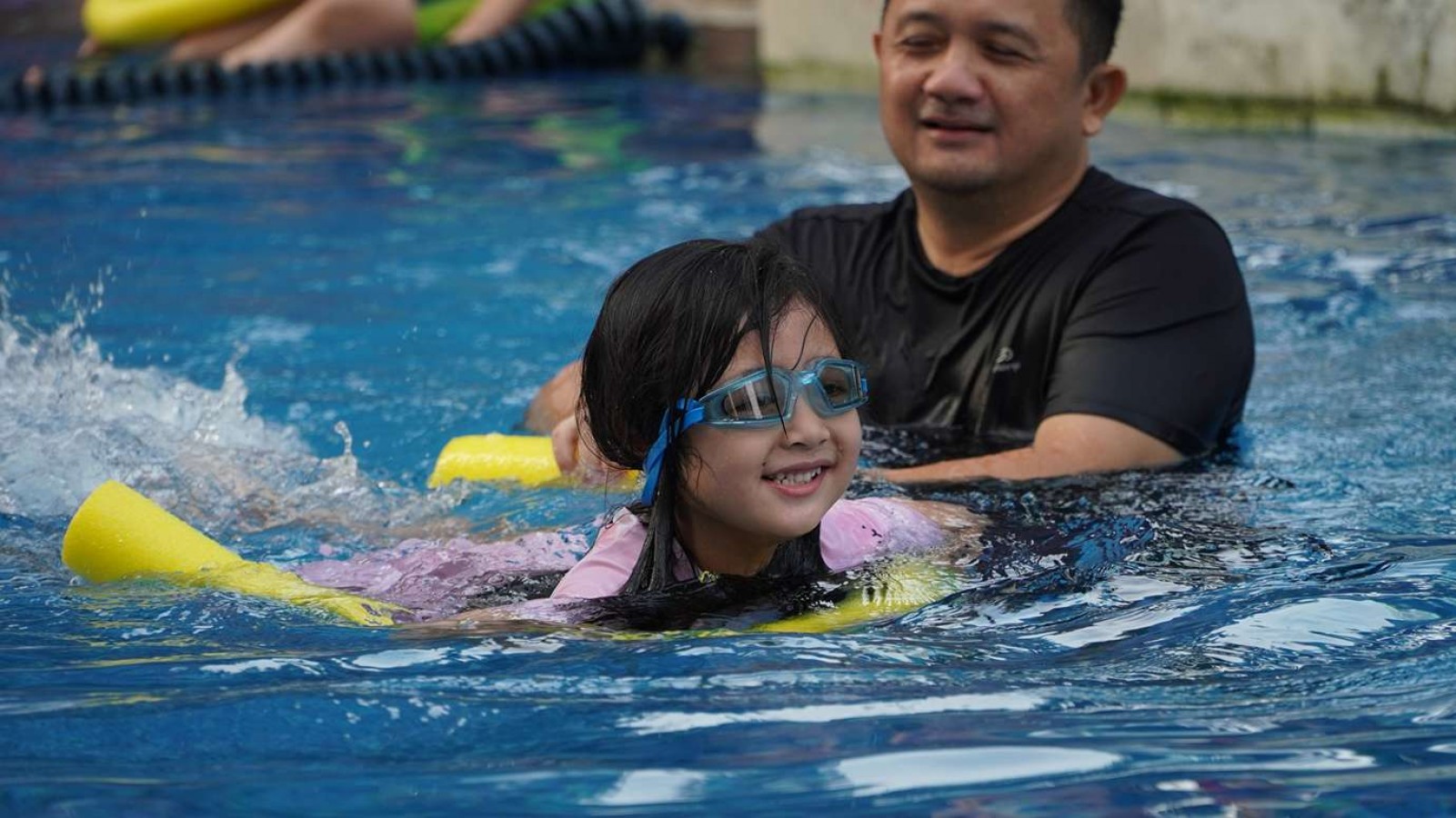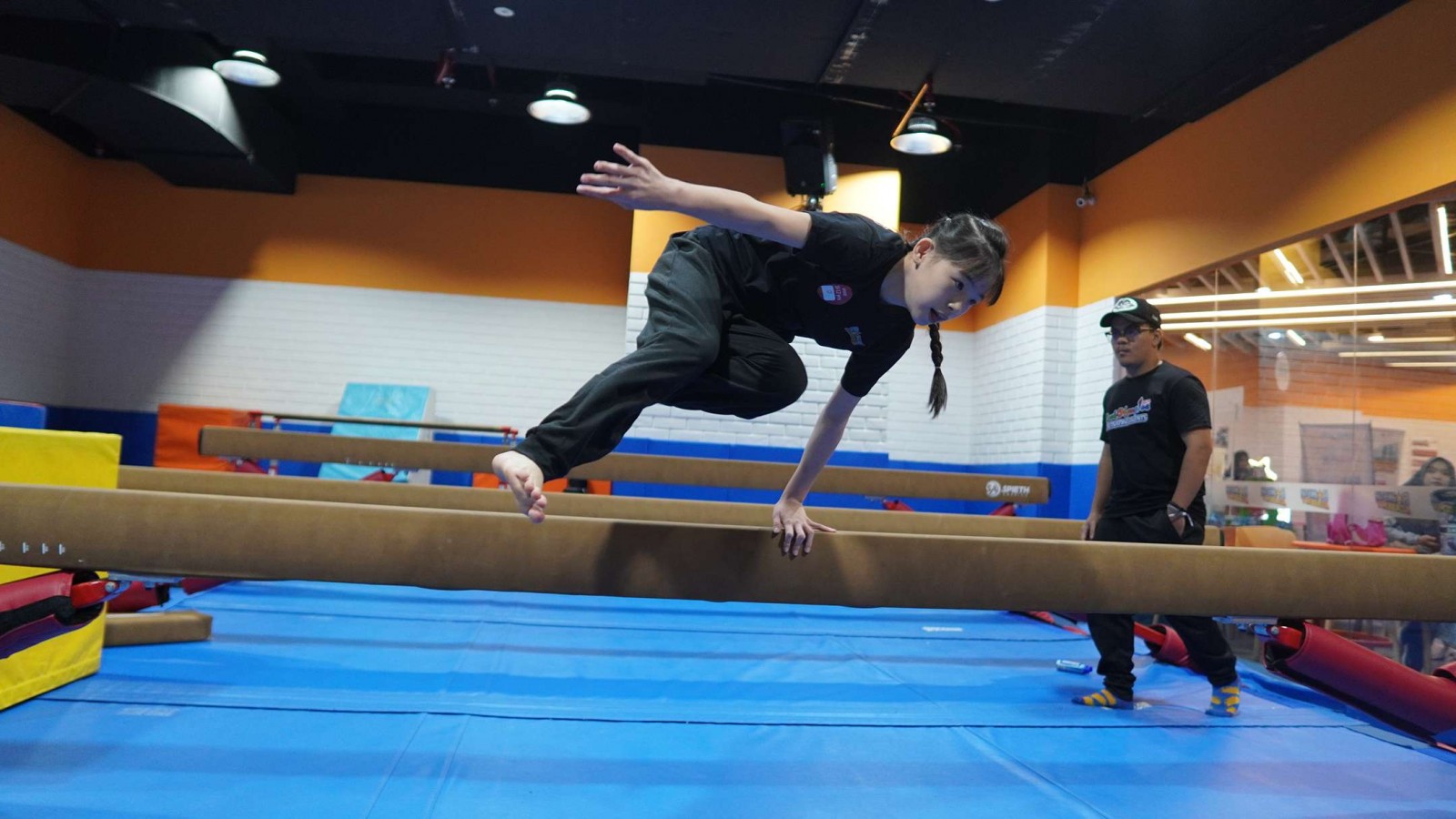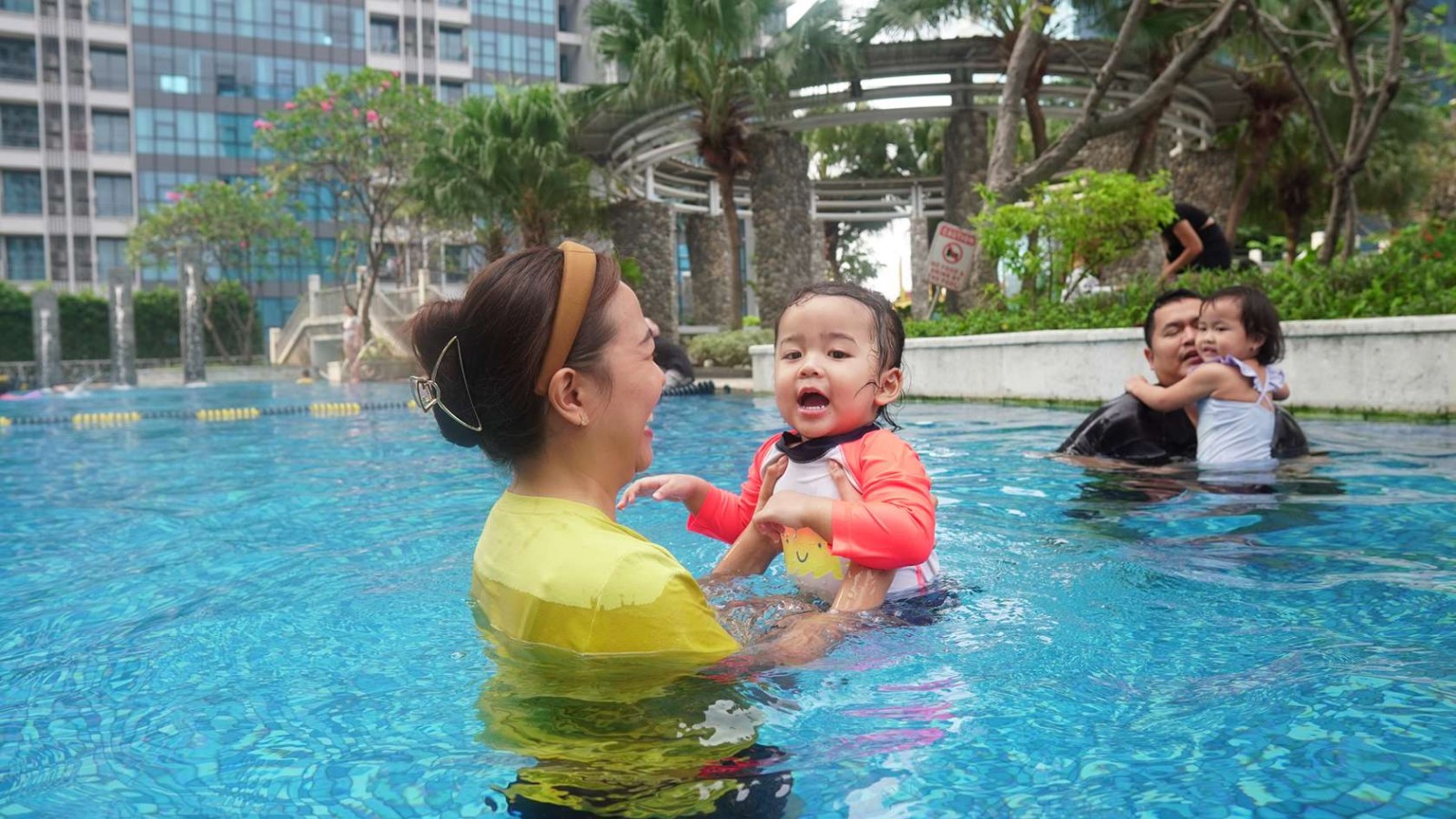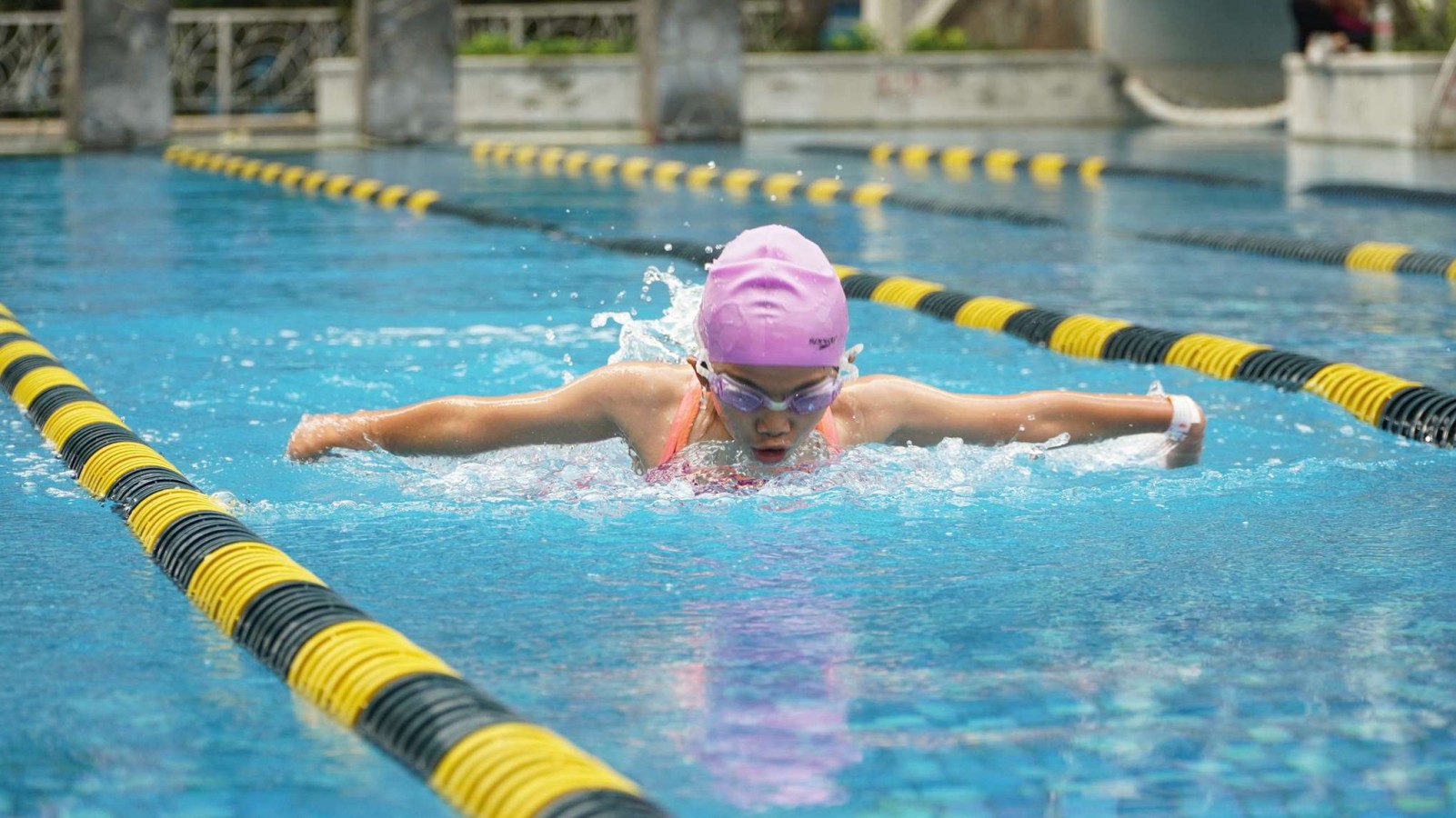Teaching Kids to Swim: Step-by-Step Tips for Parents

Teaching requires patience and effective techniques, especially when it comes to teaching kids how to swim. Parents often wonder how to help their children learn the right techniques and feel confident in the water.
Don’t worry—this article has got you covered! We’ll walk you through the best ways to teach kids to swim and explain why swimming is such an important skill for them to learn.
Why Should Kids Learn to Swim?
Swimming has become a mandatory skill that must be learned today. Apart from adding skills, swimming also helps develop children's cognitive abilities. Here's several reasons on why should children learn to swim:
A. Safety
One of the most important reasons for teaching kids to swim is water safety. According to the CDC, drowning is a leading cause of accidental death among children. By learning to swim, children gain the skills they need to prevent accidents and protect themselves in water-related situations.
B. Confidence and Independence
Swimming empowers children, helping them feel more confident in the water. This confidence often extends to other areas of life, as they develop a sense of accomplishment and independence.
C. Physical Fitness
Swimming is an excellent form of exercise that engages the entire body. It helps improve cardiovascular health, build strength, and enhance coordination. Regular swimming also promotes healthy growth and development.
When Should Kids Learn to Swim?
The ideal time for kids to learn to swim varies depending on their physical development, comfort level, and access to lessons.
Infants and toddlers (6 months to 3 years) benefit from parent-child classes that focus on water acclimation, while preschoolers (3 to 5 years) can start learning basic swimming skills in a playful, supportive environment.
By age five, most children are ready for formal swim lessons, focusing on strokes, breathing techniques, and water safety. Even older children can learn to swim at their own pace. The best time to start is when the child shows interest and is comfortable in the water.
However, according to the American Academy of Pediatrics (AAP), it is recommended to learn to swim around one year of age. Because it offers benefits such as improved cognitive function, muscle strength, sleep quality and more.
How to Teach Kids to Swim
Teaching kids to swim can be a fun and rewarding experience for parents. Whether you’re teaching your child yourself or supplementing formal lessons, here are some step-by-step tips to guide you through the process:
1. Introduce to The Water
Before diving into swimming skills, it’s essential to get your child comfortable in the water. Spend time playing in the pool, allowing them to splash, blow bubbles, and float with your support. Gentle exposure to water helps reduce fear and builds confidence.
2. Teach Water Safety Skills
Children are naturally curious, which is why it's important to set some safety rules when they go swimming. First, always remind them never to swim alone, there should always be an adult or a buddy with them. Second, make sure they wear a life jacket, especially if they're still learning to swim or are in deeper water. Life jackets help keep them safe by giving extra support in the water.
Lastly, teach them to stay away from pool filters and drains. These areas can create strong suction that might be dangerous, especially for little hands and feet. By following these simple guidelines, you can help keep swimming fun and safe for your child.
3. Practice Floating
Floating is a fundamental swimming skill that kids should master early on. Start by helping your child float on their back. Support their head and back while they relax in the water.
Encourage them to take deep breaths and remain calm. Once they’re comfortable, gradually reduce your support until they can float on their own.
4. Practice Kicking
Have your child hold onto the pool edge or a kickboard while practicing flutter kicks. Encourage them to keep their legs straight and use their whole leg to kick rather than just their feet. Practicing kicking will help them develop the strength and coordination needed for swimming.
5. Teach Arms Movement
Start with simple strokes like dog paddle or front crawl. Demonstrate the movements outside the water, then guide them through the motions in the pool. Encourage them to combine arm movements with kicking to create a smooth, coordinated swim stroke.
How to Choose the Right Swim Lessons for Kids
While some parents prefer to teach their kids to swim themselves, others opt for formal swim lessons. Choosing the right swim lessons can make a significant difference in your child’s learning experience. Here are some tips for selecting the best swim lessons for your child:
A. Consider Your Child’s Age and Skill Level
When choosing a swim program for your child, it's important to think about their age and skill level. Different age groups and skill levels need different types of instruction to ensure that your child learns effectively and stays safe in the water.
For infants and toddlers, swim programs focus on getting them comfortable in the water and teaching basic safety skills, like floating and holding onto the edge of the pool. These classes often involve parents, helping little ones feel secure.
For preschoolers, programs are designed to build on their comfort level, introducing simple swimming strokes and basic water skills. These classes are often more structured, but still fun and engaging, to keep young children interested.
For older or more advanced swimmers, programs will focus on refining their swimming techniques, learning different strokes, and even preparing for competitive swimming if that’s something they’re interested in.
Before enrolling your child in swim lessons, make sure to do some research. Choose classes that focus on swimming skills and water safety, and ensure the instructors are certified through a recognized program. The lessons should be age-appropriate, and there should be lifeguards present with CPR and First Aid certification. Additionally, the water should be clean and kept at a comfortable temperature.
Here’s a guide for teaching your child to swim at different ages:
1 to 2 Years Old
At this age, the goal is to introduce your child to water. Play with them in the pool, splash around, sing songs, and have fun. Activities should focus on making them comfortable in the water. Always keep your baby in your arms and avoid submerging them. Make sure they wear a swim diaper. Keep a close watch on your child near any water source, as drowning can happen very quickly.
2 to 3 Years Old
At this stage, your child will be more active in the water. Play games that help them move their arms, kick their legs, and float with your support. Teach them to blow bubbles to get used to having their face in the water. Keep a close eye on them and never leave them unattended in or around water.
4 to 5 Years Old
At this age, children can start formal swimming lessons. They’ll learn to float, submerge their head, glide, and use coordinated arm and leg movements. While you may not need to hold them in the water, always stay close and supervise. Be patient if they’re hesitant at times, and ensure the pool has clear markings for the deep and shallow ends.
6 Years Old and Up
Children at this age can swim independently, hold their breath longer, and start learning different strokes. While they may be able to swim on their own, you still need to supervise their activities as they may overestimate their abilities. Make sure they swim with an adult and wear a life jacket when boating or skiing. Always be vigilant around open water like beaches or lakes.
Water Safety Tips for All Ages
- Never leave children alone near water.
- Keep pool gates secure and avoid relying on inflatable toys.
- Teach children basic pool safety rules, like not running by the pool.
- Supervise all water activities, even if they’re good swimmers.
B. Check Instructor Qualifications
When choosing a swim program, it's important to look for certified instructors from trusted organizations like PRSI (Persatuan Renang Seluruh Indonesia).
At Rockstar Academy, all our swim instructors are PRSI certified, so you can trust that your child will receive high-quality lessons. And it’s not just swimming, every class in our Sports & Performing Arts Academy is taught by certified instructors, ensuring your child gets the best possible training.
C. Observe Class Size
When choosing a swim class for your child, it's a good idea to look for smaller classes with fewer students per instructor. A low student-to-instructor ratio, like 5:1, means that each child gets more personalized attention.
If you're looking for a more personalized learning experience, consider a Private Instruction program. This program offers highly tailored skills-based training that focuses on your individual needs and goals.
You’ll receive intensive training designed just for you, along with valuable feedback and guidance from your instructor whenever you need it. Plus, we provide progress reports and training videos to help you track your development.
To keep you engaged and practicing, this class also shares weekly exercises for you to complete at home. It’s a great way to enhance your skills in a way that suits your kids.
D. Evaluate the Learning Environment
Visit the swim facility to check for cleanliness, warm water temperature, and proper safety measures. This will create a comfortable and safe environment for your child.
E. Assess the Lesson Structure
When choosing a swim program, it's important to make sure that it offers a clear path for your child to progress from beginner to more advanced levels. A good program will start with basic water acclimation, which helps children get comfortable in the water by learning simple skills like floating, kicking, and blowing bubbles.
As they gain confidence, the program should gradually introduce more complex techniques, such as different swimming strokes and breathing methods. This step-by-step approach ensures that your child builds a strong foundation before moving on to more challenging skills.
F. Read Reviews
To find a great swim school and instructor for your child, it's a good idea to get advice from other parents and check online reviews. Here's how you can do it:
- Talk to Other Parents
Ask friends, family, or neighbors who have kids in swim classes about their experiences. They can recommend swim schools they trust and share what they liked or didn't like about their instructors.
- Read Online Reviews
Look for reviews and ratings of swim schools and instructors online. Websites and social media platforms often have feedback from other parents. Reading these reviews can give you a sense of how well the instructors teach and how happy other families are with the program.
Provide Your Child With Swimming Skills Parents!
Teaching a child, especially how to swim, requires patience and expertise. If you're short on time, you can enroll your child at Rockstar Academy. Our swimming classes follow the ASCTA (Australian Swimming Coaches and Teachers Association) curriculum, ensuring they learn with the best techniques.
As your child progresses, they’ll have the chance to join exciting events like the RockOlympics. Rockstar Academy offers up to 120 classes each week, supporting and nurturing your child's interests and talents. Plus, you can sign up for a free trial class to see if it’s a good fit before committing. How great is that?
FAQ
Is it safe for babies to swim?
Yes, babies can safely be introduced to water through parent-child classes, which focus on water acclimation and basic skills. These classes emphasize safety and provide a gentle introduction to the water, helping babies get comfortable while promoting early development.
What should my child wear to swim lessons?
For swim lessons, your child should wear a comfortable swimsuit that allows for easy movement. If your child is not yet potty-trained, be sure to use swim diapers to prevent accidents in the pool. Additionally, consider bringing swim goggles and a swim cap if required by the swim school.



